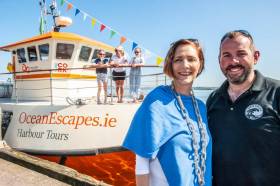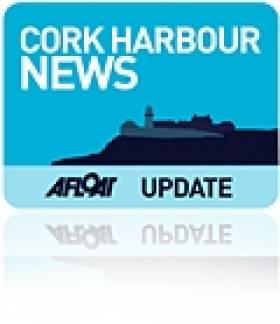Displaying items by tag: CorkCobh
Launch of New Boat Tours of Cork Harbour
#CorkHarbour - Seating 72 is a new boat that is commencing on Thursday for the summer season connecting Cork city and Cobh.
Ocean Escapes, a Cork-based company, writes the Evening Echo, is investing €1/2 million in the new service and will operate daily guided tours of the harbour from Cobh to Cork City and Cork to Cobh, with a return by rail option, until September.
Locals and visitors alike will enjoy the experience, which will include the sights, sounds and stories of the harbour, told in a fun and theatrical way by engaging guides.
Highlights along the ancient port waterways will include breath-taking views and famous landmarks such as Crosshaven, Roches Point Lighthouse, Blackrock Castle, Spike Island Prison, Camden Fort Meagher, Haulbowline Naval Base (Ireland’s only Naval Base), Blackrock Castle, Martello Towers, Lord Inchiquin and the Royal Cork Yacht Club, the World’s first Yacht Club, and Cobh, the last port of call for the Titanic, and more.
Passengers will also learn about Cork’s fascinating maritime history and hear unique stories about each of the towns, villages and islands along the harbour.
For further reading on this story, click here.
Road, Rail or ‘Sail’ to Cobh
There's also the option of departing Cork-city centre to Cobh by taking an excursion on the River Lee on the passenger-tender Spirit of the Isles. Sailings depart the city's Penrose Quay, which is on the same side to the railway (Kent) station.
Sailings will operate this Saturday and Sunday and for the remaining weekends throughout September. The boat's Saturday schedule departs the city at 11am and arrives at Cobh's Kennedy Quay at 12.15pm.
In addition there is a Lower harbour tour off Cobh on Saturdays and Sundays, departing Kennedy Pier, Cobh - 12.30pm and returning to Kennedy Pier at 1.45pm. The boat then departs Cobh at 2pm to return to Cork with an arrival time of 3.15pm. For both this Saturday and Sunday sailing schedules, fares and further information go to www.corkharbourcruises.com
In the late 1980's the Spirit of the Isles then named Ingot operated excursions for several seasons from Dun Laoghaire's East Pier to Dalkey Sound and Killiney Bay.
Returning to the third annual Cork Harbour Open Day there will also be a free shuttle-service running in the lower harbour calling at Ringaskiddy, Monkstown, Cobh, Aghada and Crosshaven. The fast-ferry RIB operator 'Whale of a Time' is providing the free service which is sponsored by the Port of Cork Company and National Maritime College of Ireland (NMCI). For further information visit http://www.whaleofatime.net/Home.html
- Dun Laoghaire
- Cork Harbour
- port of Cork
- Cruise Liners
- River Lee
- Cork Harbour Open Day
- NMCI
- Cobh Cruise Terminal
- National Maritime College of Ireland (NMCI)
- Ports and Shipping News
- Cork Harbour News
- Irish Rail
- Port of Cork Company
- Cunard Line
- Queen Elizabeth
- Whale of a Time
- Cruise Liner news
- Dalkey Sound
- Cruise ship news
- Midelton Food & Drink Festival
- Ingot
- Killiney Bay
- Irish passenger excursion vessels
- Cork Harbour Cruises
- CorkCobh
- Cork (Kent) station
- Spirit of the Isles





























































